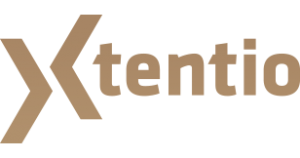A software has been used successfully for years, various specific adaptations have been made to cover individual company requirements, and then it happens: The vendor announces end-of-life or discontinuation of the software. And now?
First, a definition of the term: Software end-of-life (EOL) is the point at which a software vendor stops releasing updates and new versions. If this is the case, users can expect no update after the expiration date, and most importantly, perhaps more seriously, no support from the vendor.
And even though it is usually announced well in advance through announcements or emails to customers, switching to a new solution usually involves a lot of cross-departmental effort. Therefore, it is important for organizations to understand what software expiration means for them.
In this article, we discuss how to prepare for the end of a software release's life, and why you should think of it more as a new beginning with many opportunities.
But first, why do vendors choose to end support?
It is common practice for software vendors to discontinue support for older versions in order to focus on improving newer versions of their product line. This allows them to use their resources more efficiently by focusing on developing new features instead of maintaining old ones.
Other important reasons for end-of-life may include:
- acquisition and restructuring of the supplier by another company
- an end to the provider's business activity
- a new strategic orientation of the supplier
- critical, major technology leaps in software (e.g., end-of-life Hybris SAP to migrate to Commerce Cloud technology).
End of life or end of maintenance is often unavoidable and cannot be influenced. Good preparation is therefore essential to ensure that the business continues to run smoothly, as it is not only the current processes that need to be migrated, but the entire previous use of the software must be considered and, if necessary, rethought.
So ask yourself the question:
What do I use the current software for and what are my goals with it?
Vor der Umstellung auf eine neue Softwarelösung ist es wichtig, die derzeitige Software und ihre Nutzung zu bewerten. Dabei gilt es, herauszufinden, für welche Aufgaben die Software eingesetzt wird und welche Ziele mit der aktuellen Nutzung verfolgt werden. Auf diese Weise können Unternehmen besser verstehen, welche Auswirkungen die Umstellung auf das laufende Business hat und was getan werden muss, um sicherzustellen, dass wichtige Abläufe nicht gestört werden.
Often, software is used differently in the enterprise (e.g., for company-specific, individualized processes) than intended by the vendor, which means that requirements may not be easily mapped by other vendors. Most importantly, the potential impact of software retirement on different sales channels and touch points is critical.
In addition to internal usage, the assessment of the current state includes the vendor's framework, the cost of the software, and the time remaining for support. Often the analysis of the current situation is itself a challenge. Therefore, ask yourself:
- What exactly is the old software used for?
- What are my goals in using the old software?
- Are there objectives that cannot be mapped by the old software but could be important for optimizing processes in the future?
Nach der Bewertung des aktuellen Zustands ist der nächste Schritt die Planung für die Zukunft.
Now it's important to find out:
How do I find new software that adequately replaces my old one?
In most cases, there are several different software solutions on the market for a given problem. Finding the perfect option for your business from these is often not easy. It is not only the available functions within a software that are relevant for its later success in the company - criteria such as your industry, possible interfaces or intuitive operation are also decisive.
Meist gibt eine Analyse der Ist-Situation gute Anhaltspunkte, worauf bei einer Auswahl geachtet werden muss. Zudem erhalten Unternehmen schnell einen Blick auf kommende Herausforderungen und Möglichkeiten durch einen Softwarewechsel. Stellen Sie sich hier folgende Fragen:
- What are my requirements for a new software?
- Who will use this new software? For example, how many users will access it daily or hourly? What are their roles and responsibilities in using this new version?
- Which processes are linked to the software? And what impact does a change have on them?
- What impact will the changeover have on my business? And should I start the changeover immediately?
Answering these questions is often more challenging than companies initially think. It is so important to find accurate, sustainable, and holistic answers to these questions before initiating a software change. The fact that you do not have an answer to each of these questions today is perfectly normal. The overarching question is, "What do I need anyway?" and we encounter that again and again in various projects.
Be sure to consider your unique business situation, current and future requirements, and potential interfaces before you begin the software selection process.
We know how to choose the right software - Work with us to find the solution that is right for your business.
Our team of experts asks the right questions to work with you to create real digital value through transformation. We take a holistic view of your unique business situation to give you confidence in your decision. Together we answer the questions:
- What do you really want to achieve?
- What does it take to achieve the goal?
- How do we proceed exactly?
We operate 100% independent of software providers or partners. Neutral, experienced and highly structured, we arrive at the best solution for your company. With the confidence that your business will continue uninterrupted and old processes will be rethought.
